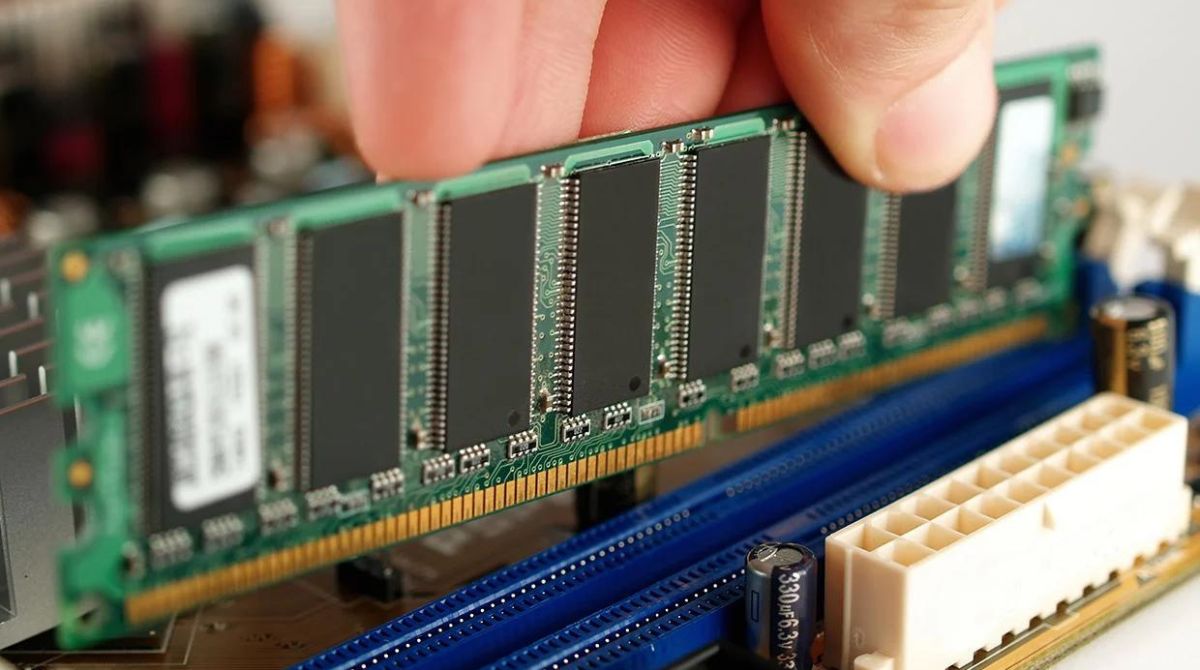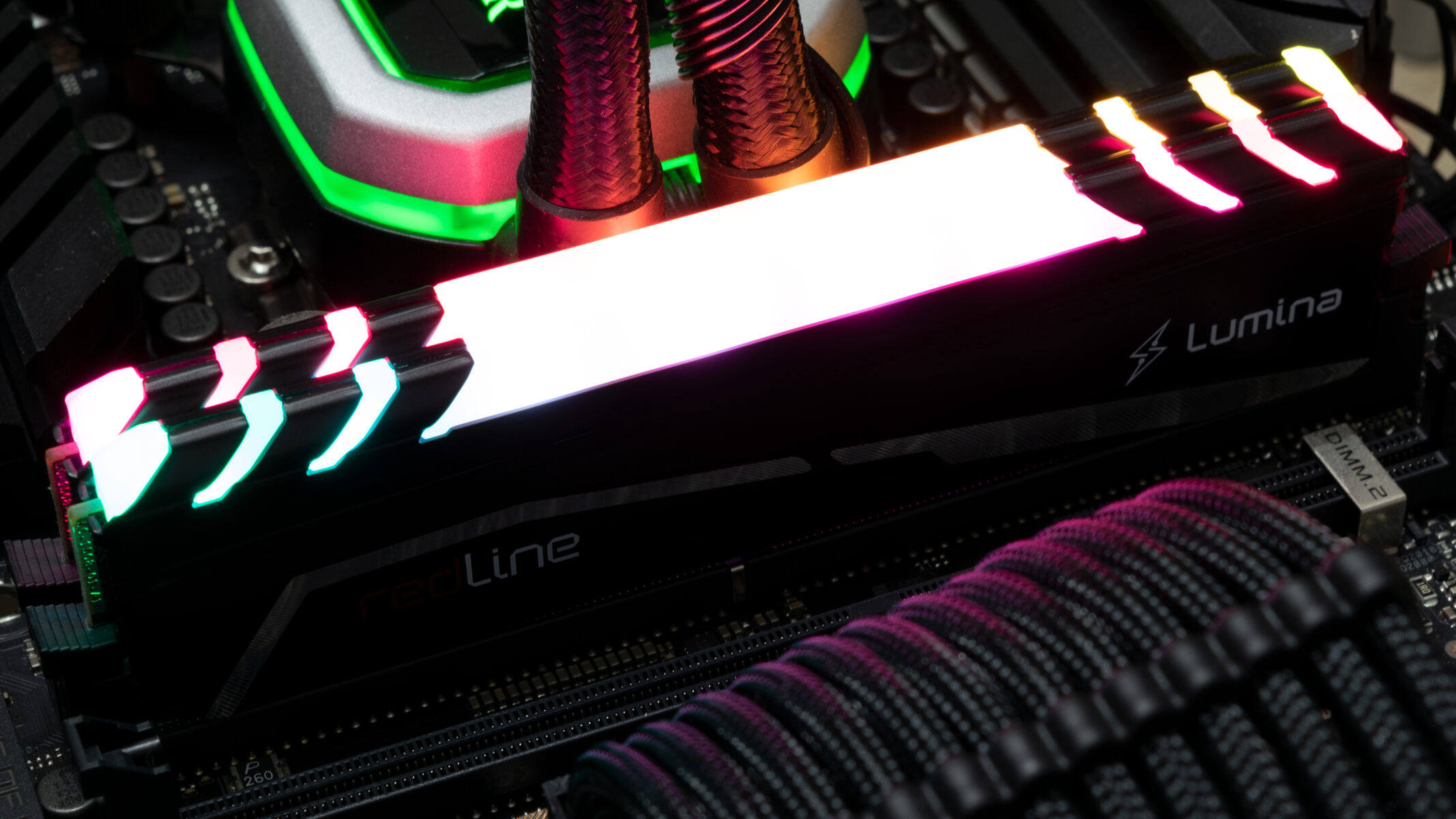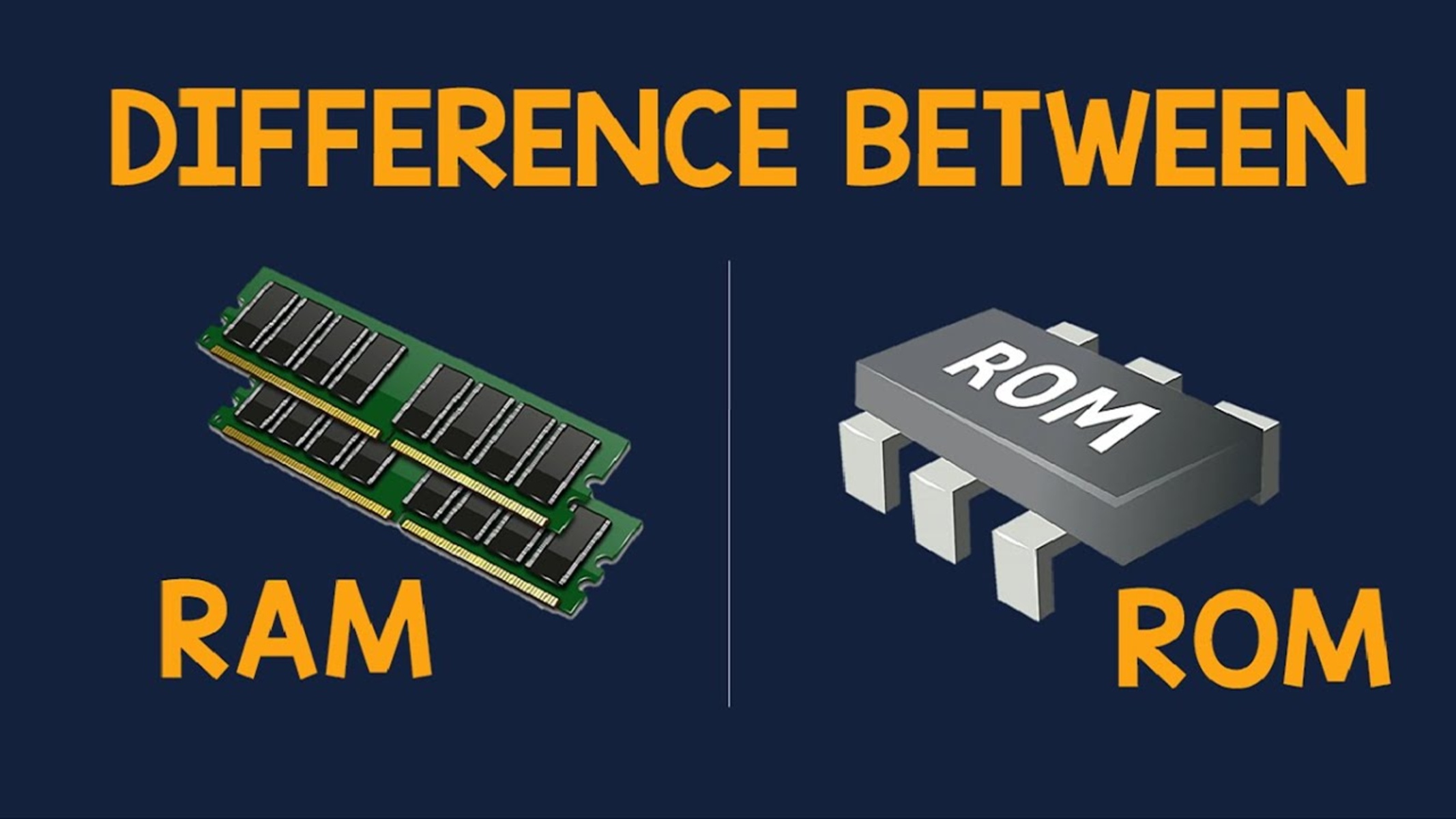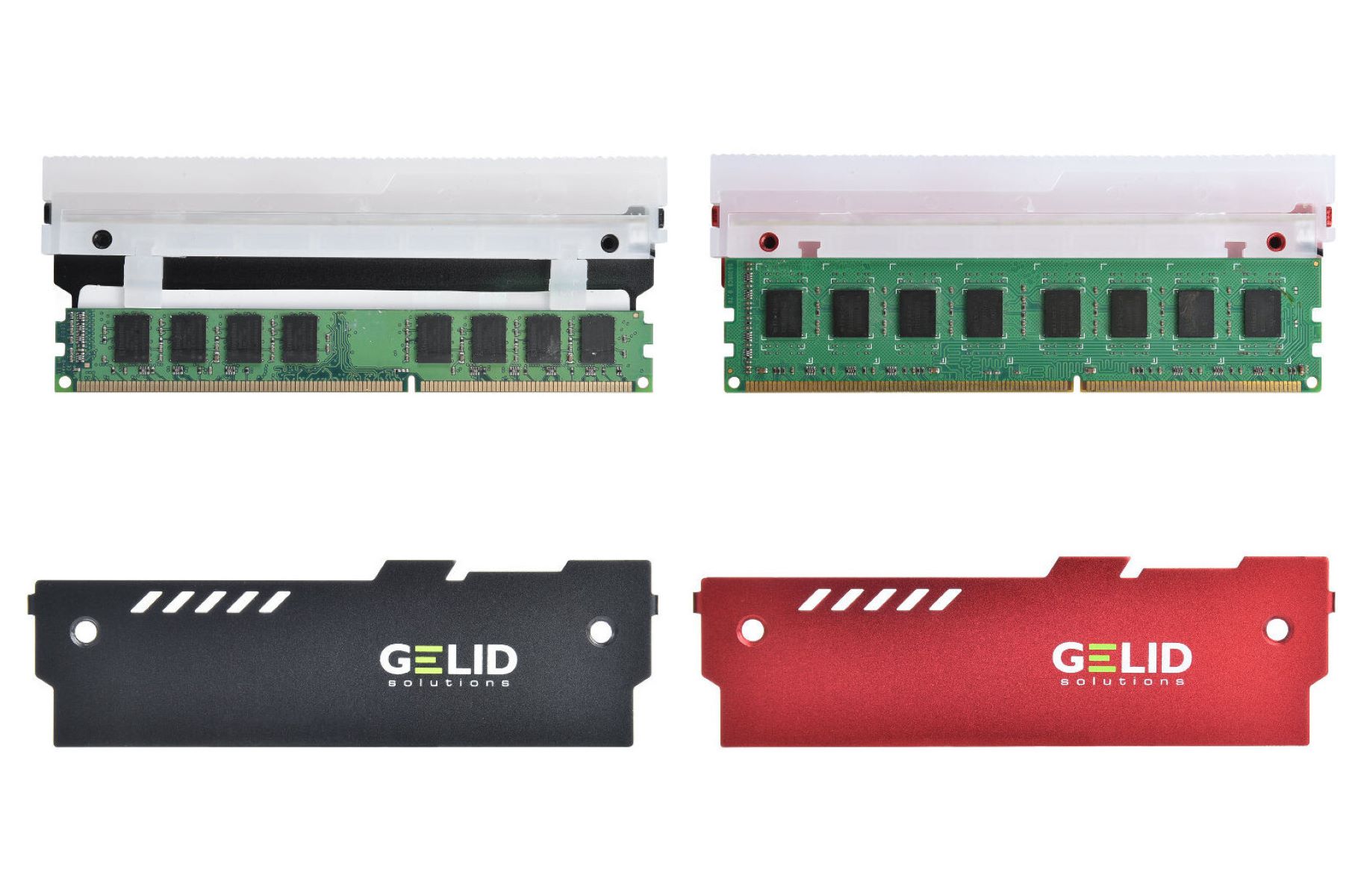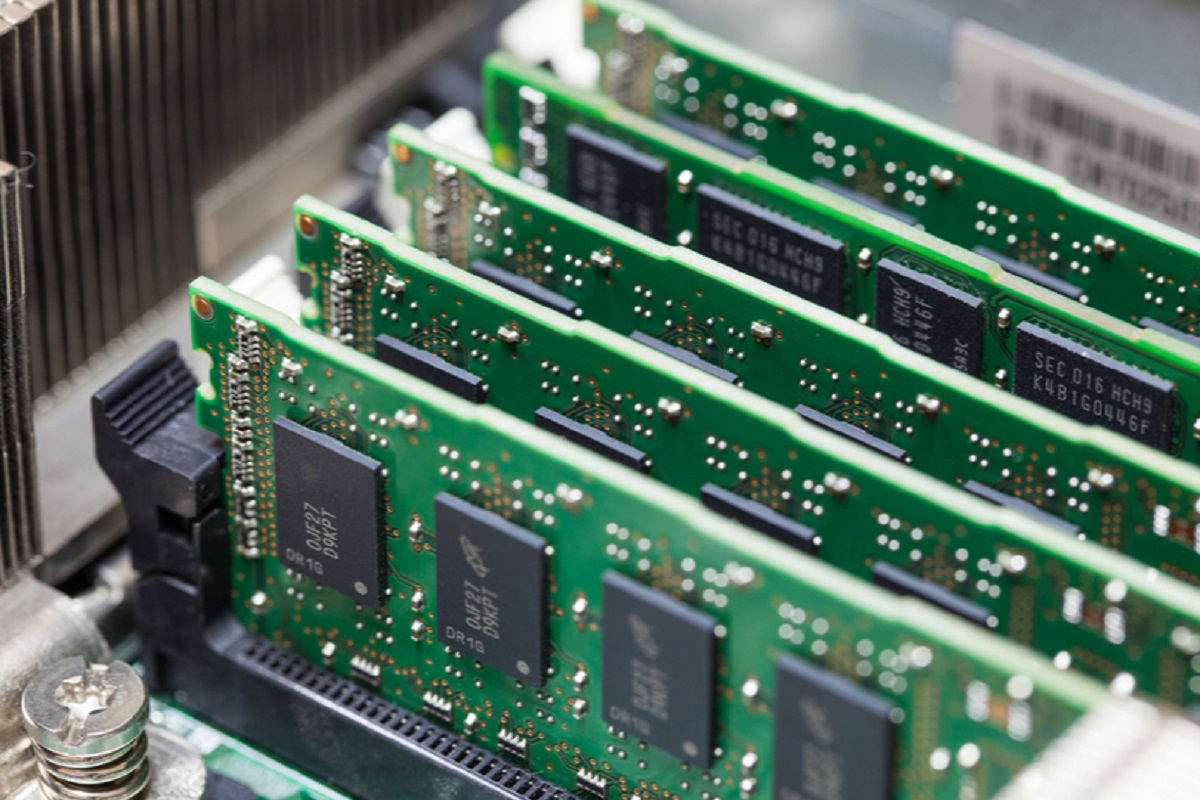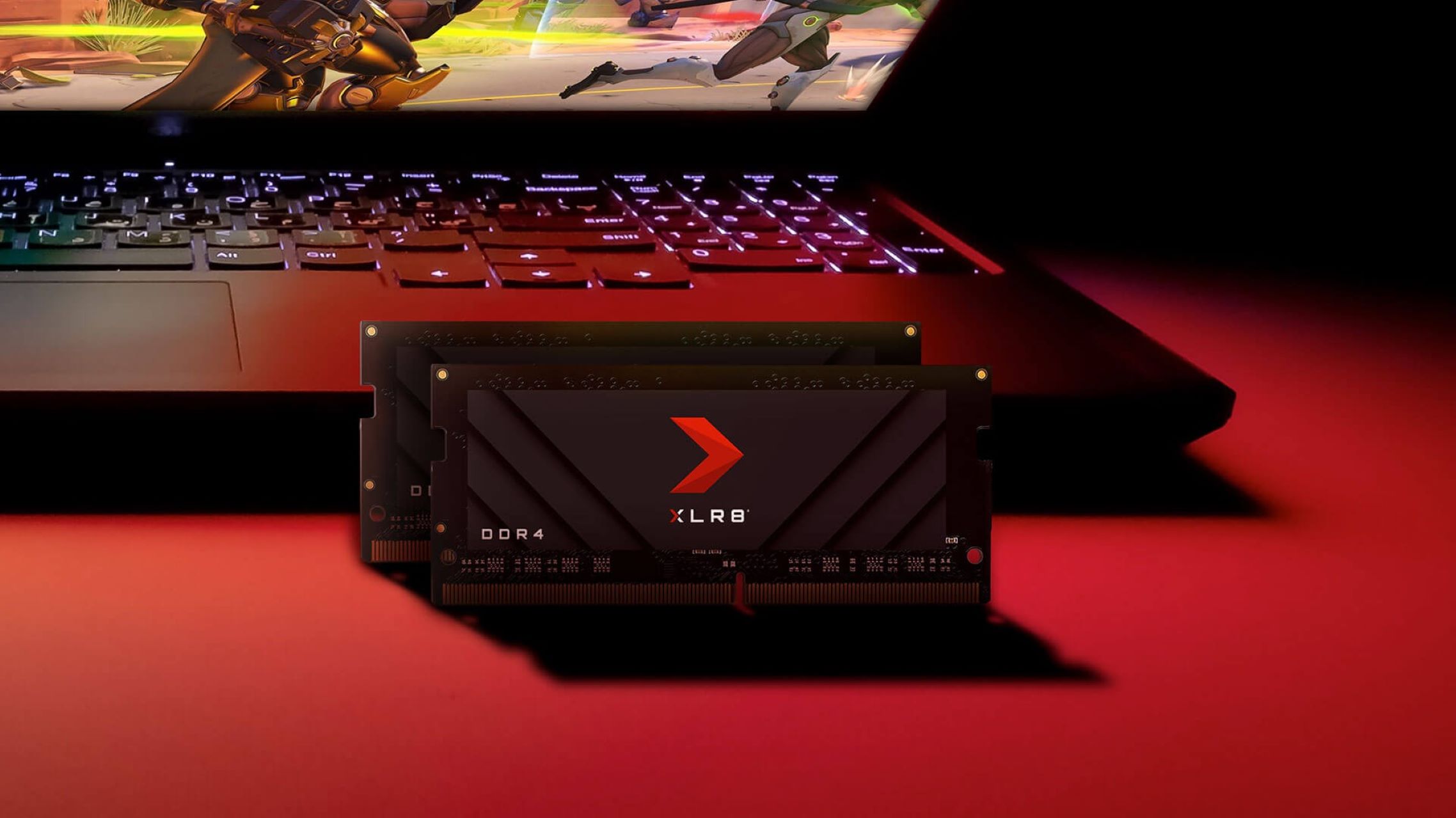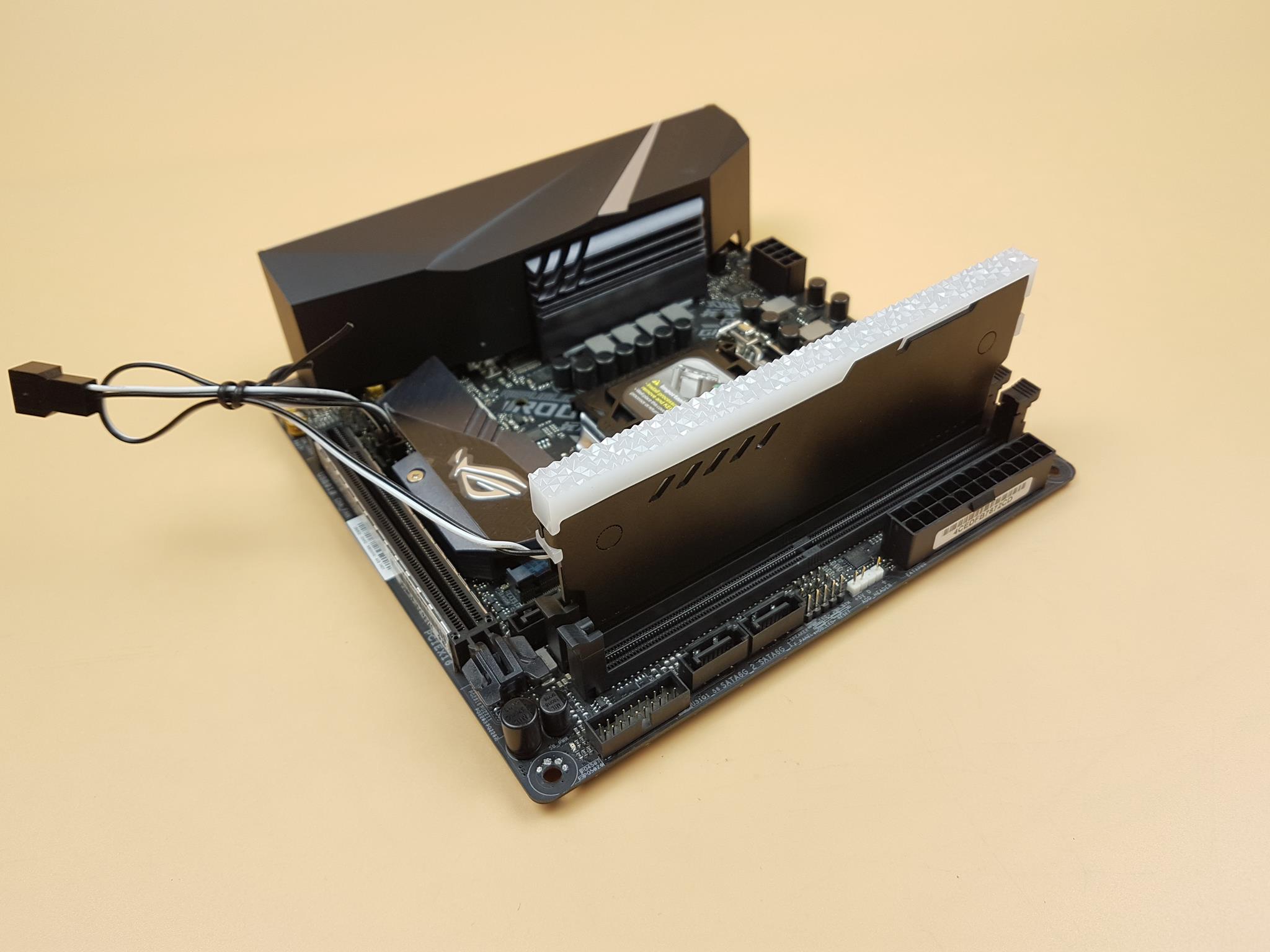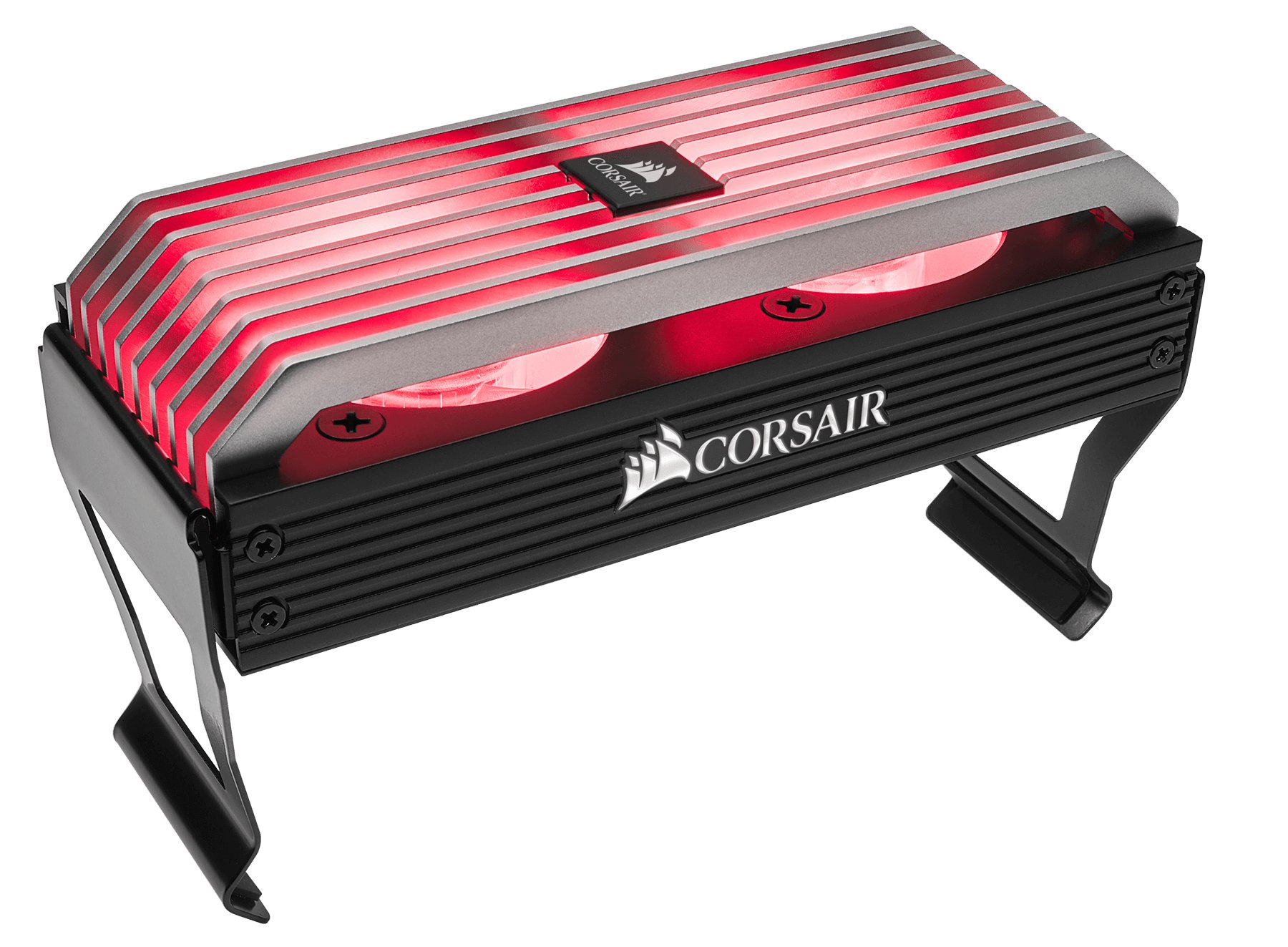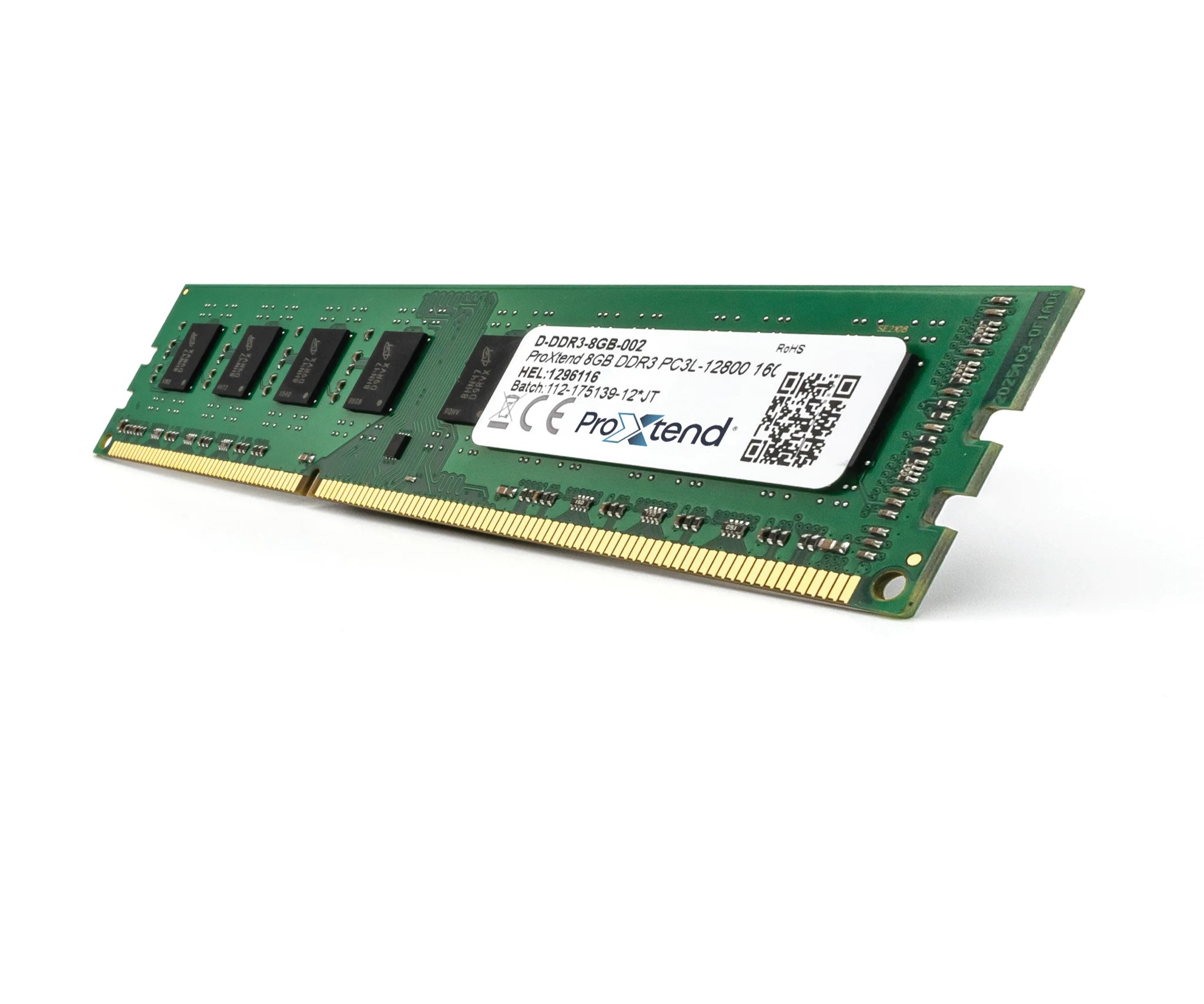Introduction
Welcome to the fascinating world of Random Access Memory, commonly known as RAM. In the ever-evolving realm of computer technology, RAM plays a vital role in the performance and functionality of our devices. Whether you’re using a desktop, laptop, or even a smartphone, understanding the meaning and importance of RAM is essential.
RAM, in simple terms, can be thought of as the short-term memory of a computer. It is a hardware component that allows the fast and temporary storage of data that the computer’s processor needs to access quickly. Think of it as a workspace where the computer can store and retrieve information that is actively being used, contributing to the overall speed and efficiency of the system.
But how does RAM actually work? When you open an application on your computer, it is loaded from the storage drive into the RAM. The processor can then access this data directly from the RAM, rather than having to retrieve it from the slower storage drive. This results in faster data access times, which leads to smoother multitasking, quicker program launching, and improved overall responsiveness of your computer.
RAM’s importance in a computer cannot be overstated. It directly affects the performance and multitasking capabilities of your device. Insufficient RAM can lead to sluggishness, freezing, and even crashes, especially when running resource-intensive applications or working with large files. On the other hand, having ample RAM allows your computer to handle multiple tasks simultaneously, ensuring smooth and efficient operation.
There are different types of RAM available, each with its own unique characteristics and advantages. The most common type is called DDR4 (Double Data Rate 4), which is widely used in modern systems. However, other variants, such as DDR3 and DDR5, also exist, with varying speeds and compatibility.
When it comes to RAM, capacity and speed are two important factors to consider. RAM capacity refers to the amount of memory available, while speed, measured in megahertz (MHz), determines how quickly data can be transferred. Depending on your needs and budget, you can choose a RAM configuration that suits your requirements.
Fortunately, RAM is often relatively easy to upgrade and expand, allowing you to improve your computer’s performance without needing to replace other components. Whether you’re adding more RAM modules or replacing existing ones with higher-capacity ones, this can be a cost-effective way to enhance your computing experience.
However, like any other computer component, RAM can sometimes face issues. From compatibility problems to module failures, troubleshooting RAM-related problems can be challenging. Thankfully, there are common issues and solutions that can help you diagnose and resolve these problems, ensuring that your RAM operates optimally.
Now that you have a basic understanding of RAM’s meaning and importance, join us as we delve deeper into the world of this crucial computer component. In the following sections, we will explore different types of RAM, capacity and speed considerations, upgrading and expanding RAM, and common RAM issues and troubleshooting tips to help you make the most of your computer’s memory capabilities.
Definition of RAM
Random Access Memory, commonly known as RAM, is a vital component of any computer system. It acts as the short-term or temporary memory of the computer, allowing it to store and access data quickly. Unlike the permanent storage provided by hard drives or solid-state drives (SSDs), RAM is volatile, meaning that its contents are erased when the computer is powered off or restarted.
RAM works by providing the computer’s processor with a fast and temporary storage space to hold data that is actively being used. When you open a program or file, it is loaded from the storage drive into the RAM, allowing the processor to access it quickly and efficiently. This process is commonly referred to as “loading into RAM” or “loading into memory.”
One of the key features of RAM is its random access capability. This means that the computer can access any data stored in the RAM directly, in any order, without the need to sequentially search through the memory. This random access feature gives RAM its speed advantage over other storage media, such as hard drives or SSDs, which require the physical movement of mechanical parts or electrical read/write operations.
RAM is often measured in gigabytes (GB) or terabytes (TB), indicating its storage capacity. The more RAM a computer has, the more data it can store and access simultaneously, resulting in better multitasking capabilities and overall system performance. However, it’s important to note that increasing RAM capacity does not directly translate to faster processing speed; it simply allows the computer to handle more tasks or larger data sets without slowing down.
Another important aspect of RAM is its speed, which is measured in megahertz (MHz) or gigahertz (GHz). The speed determines how quickly data can be transferred to and from the RAM. Higher-speed RAM modules can handle data transfers more efficiently, resulting in faster loading times and overall system responsiveness. However, the speed of the RAM also depends on the compatibility and limitations of the computer’s motherboard and processor.
Overall, RAM is a crucial component of a computer system, as it directly impacts its performance and multitasking capabilities. By providing fast and temporary storage for data that the processor needs to access quickly, RAM plays a vital role in ensuring smooth and efficient operation of various applications and tasks. Understanding the definition and function of RAM is essential for making informed decisions when it comes to upgrading or purchasing a new computer system.
How RAM Works
Understanding how RAM works is key to comprehending its importance in a computer system. RAM, short for Random Access Memory, is a hardware component that enables a computer to store and retrieve data quickly. It serves as a temporary workspace where the computer can access the information it needs for processing.
When you turn on your computer and start using applications, certain data from the storage drives, such as hard drives or SSDs, is loaded into the RAM. This data includes program instructions, active files, and data required for the current tasks. Unlike the storage drives, which provide long-term storage even when the computer is powered off, RAM is a volatile form of memory. This means that its contents are erased when the computer is shut down or restarted.
The data stored in the RAM can be accessed by the computer’s processor almost instantaneously. This is due to the physical proximity of the RAM modules to the processor on the motherboard, as well as the high-speed data transfer capabilities of the RAM itself. When the processor needs to retrieve or modify data, it can access it directly from the RAM without the need to wait for it to be fetched from a slower storage drive.
One of the key features of RAM is its ability to provide random access to stored data. This means that the processor can retrieve any piece of data stored in the RAM directly, without the need to access it sequentially. This random access capability significantly speeds up data retrieval, as the processor can jump to any memory location in the RAM instantly.
RAM is organized into small units called memory cells, where each cell can store a specific amount of data. These cells are arranged in a grid-like pattern, with each cell having a unique address. When the processor wants to read or write data, it sends a request to the RAM, specifying the address of the memory cell it needs to access. The RAM then responds by providing the data stored at that particular memory location.
Another important aspect of RAM’s functionality is its ability to quickly transfer data to and from the processor. This is achieved through high-speed buses and memory controllers, which facilitate the seamless flow of data between the RAM and the processor. The speed of the RAM, measured in megahertz (MHz) or gigahertz (GHz), determines how fast this data transfer can occur. Higher-speed RAM modules can handle data transfers more efficiently, leading to improved system performance.
Overall, RAM’s operation can be summarized as a fast and temporary storage mechanism that allows the computer to quickly access the data it needs for processing. By providing random access to data and facilitating high-speed data transfers, RAM plays a crucial role in the performance and responsiveness of the computer system.
Importance of RAM in a Computer
RAM, or Random Access Memory, is a critical component of any computer system, playing a crucial role in its overall performance and functionality. From multitasking capabilities to efficient data processing, the importance of RAM cannot be overstated. Here are some key reasons why RAM is essential in a computer:
1. Multitasking: RAM allows for smooth multitasking, enabling you to run multiple applications simultaneously without significant performance degradation. With more RAM, your computer can seamlessly handle tasks such as browsing the internet, editing documents, streaming media, and running resource-intensive applications without slowing down or experiencing lagging issues.
2. Faster Data Access: RAM works as a temporary storage space, providing quick data access for the computer’s processor. Unlike storage drives, which have slower read and write speeds, RAM allows for instantaneous retrieval of data when needed. This leads to faster loading times for programs and files, enhancing overall system responsiveness and user experience.
3. Improved Performance: Insufficient RAM can result in a sluggish computer, as the system struggles to manage available resources efficiently. With adequate RAM, the computer can store a larger amount of data in its working memory, reducing the need for constant data swapping between RAM and storage drives. This results in smoother operation, faster task execution, and enhanced overall system performance.
4. Enhanced Gaming Experience: Gamers often rely on RAM to deliver optimal performance during gameplay. As modern games become more demanding in terms of graphics, AI, and overall complexity, having ample RAM allows for smoother gameplay, reduced loading times, and enhanced visual and audio effects. This ensures an immersive gaming experience without frustrating lags or sudden frame rate drops.
5. Efficient Virtualization: Virtualization technologies, such as running multiple operating systems simultaneously or running virtual machines for testing and development purposes, heavily rely on RAM. A significant amount of RAM enables the smooth operation of virtualized environments, ensuring adequate resources for each virtual instance and minimizing performance degradation.
6. Effective Data Analysis: RAM plays a crucial role in data-intensive tasks, such as scientific research, data analysis, and video editing. These activities often involve working with large datasets that require quick access and manipulation. Sufficient RAM allows for faster data processing, minimizing bottlenecks and optimizing the efficiency of these resource-intensive tasks.
7. Future-Proofing: As technology advances and software becomes more demanding, having ample RAM ensures your computer remains capable of meeting future requirements. Investing in a computer system with sufficient RAM from the start allows for smoother upgrades and better longevity, reducing the need for frequent hardware replacements.
Understanding the importance of RAM in a computer system is crucial when making decisions about purchasing or upgrading your device. Having adequate RAM enables smoother multitasking, faster data access, improved performance, enhanced gaming experiences, efficient virtualization, effective data analysis, and future-proofing capabilities. It is an investment that can significantly enhance the overall functionality and usability of your computer system.
Different Types of RAM
When it comes to Random Access Memory (RAM), there are several different types available, each with its own unique characteristics and advantages. Understanding the differences between these types can help you make informed decisions when choosing the appropriate RAM for your computer system. Here are the most common types of RAM:
1. DDR4: DDR4, or Double Data Rate 4, is the current standard for RAM used in most modern computer systems. It offers improved performance and efficiency compared to its predecessor, DDR3. DDR4 RAM modules operate at higher frequencies and have increased memory bandwidth, resulting in faster data transfer rates and improved overall system performance.
2. DDR3: DDR3, or Double Data Rate 3, was the standard RAM type before DDR4 became prevalent. While it may not offer the same level of performance as DDR4, DDR3 RAM is still widely available and compatible with many older computer systems. It is often considered a more cost-effective option for systems that do not require the latest performance advancements.
3. DDR5: DDR5, or Double Data Rate 5, is the next generation of RAM that is currently under development and expected to become available soon. It promises even higher data transfer rates and improved power efficiency compared to DDR4. DDR5 RAM will offer increased capacities and bandwidth, making it ideal for future applications that demand higher performance.
4. SDRAM: Synchronous Dynamic Random Access Memory (SDRAM) refers to a class of RAM that synchronizes with the computer’s system clock. It is commonly used in desktop computers and offers faster data transfer rates compared to older asynchronous RAM technologies. SDRAM is available in different variations, such as SDRAM, DDR, DDR2, DDR3, and DDR4, each with specific data transfer rates and compatibility requirements.
5. SRAM: Static Random Access Memory (SRAM) is a type of RAM that uses flip-flop circuitry to store each bit of data. Unlike dynamic RAM (DRAM), SRAM does not require constant refreshing of data, allowing for faster access times and lower power consumption. However, SRAM is more expensive to produce and typically used in cache memory rather than main system memory.
6. Expansion RAM: Expansion RAM refers to additional RAM modules that can be added to a computer system to increase its overall memory capacity. These modules are commonly available in standard formats, such as DIMM (Dual In-Line Memory Module) and SO-DIMM (Small Outline Dual In-Line Memory Module), and can be easily installed into compatible memory slots on the motherboard.
7. Graphics Memory: Graphics Memory, also known as Video RAM (VRAM), is a dedicated type of RAM used by the computer’s graphics processing unit (GPU). It is specifically designed to handle the intensive computing requirements of rendering graphics and videos. Typically, VRAM operates at higher speeds to facilitate the real-time calculations needed for smooth graphics performance.
When choosing RAM for your computer system, it’s important to consider compatibility with your motherboard, the requirements of your applications, and your budget. DDR4 is currently the most widely supported and recommended RAM type for modern systems, offering a good balance between performance and cost. However, older systems may still benefit from DDR3 RAM, while future systems may require the advancements offered by DDR5. Understanding the different types of RAM ensures you make an informed decision when upgrading or purchasing RAM for your computer system.
RAM Capacity and Speed
RAM capacity and speed are essential considerations when choosing or upgrading the memory for your computer system. The combination of these two factors determines the overall performance and capabilities of your system. Here’s what you need to know:
RAM Capacity: The capacity of RAM refers to the amount of memory a computer system has available for storing and accessing data. RAM capacity is measured in gigabytes (GB) or even terabytes (TB). The more RAM you have, the more data your system can handle simultaneously, which leads to better multitasking and responsiveness.
When it comes to RAM capacity, it’s important to strike a balance between having enough RAM for your needs and avoiding unnecessary excess. For basic computing, such as web browsing, document editing, and light multitasking, 4GB to 8GB of RAM is often sufficient. However, if you frequently work with resource-intensive applications, perform tasks such as video editing, 3D rendering, or run virtual machines, you may benefit from 16GB or more of RAM.
Keep in mind that the operating system and other background processes also use a portion of the available RAM. Therefore, consider allocating enough memory to accommodate these system requirements along with your workload.
RAM Speed: The speed of RAM, also known as the memory clock speed, measures how quickly data can be transferred to and from the RAM module. It is typically measured in megahertz (MHz) or gigahertz (GHz). Higher RAM speeds result in faster data transfer rates and improved overall system performance.
When choosing RAM speed, it’s essential to ensure compatibility with your computer’s motherboard. The motherboard specifications will indicate the supported RAM speeds. Installing RAM that exceeds the motherboard’s supported speed may result in the RAM defaulting to a lower speed, limiting its performance potential.
While faster RAM speeds can offer performance benefits, the actual impact on overall system performance may vary. In most everyday computing scenarios, the difference in performance between different RAM speeds may not be noticeable. However, tasks such as gaming, video editing, or running memory-intensive applications can benefit from higher RAM speeds.
It’s worth noting that the RAM speed alone does not guarantee better performance if other system components, such as the processor and storage drives, are not adequately matched in terms of speed and capability. Therefore, it’s important to consider the overall system configuration and ensure a balanced approach when choosing RAM.
In summary, RAM capacity and speed are crucial factors in determining the performance and capabilities of your computer system. Having sufficient RAM capacity enables smooth multitasking and efficient handling of large data sets, while faster RAM speeds improve data transfer rates and overall system responsiveness. Consider your specific computing needs and ensure compatibility with your motherboard when selecting the appropriate RAM configuration for your system.
Upgrading and Expanding RAM
One of the great advantages of RAM is that it can be easily upgraded and expanded to enhance the performance of your computer system. Whether you’re looking to improve multitasking capabilities or accommodate resource-intensive applications, upgrading or expanding your RAM can be a cost-effective solution. Here’s what you need to know:
Checking Compatibility: Before upgrading or expanding your RAM, it’s essential to check the compatibility of your computer system. Consult your computer’s user manual or manufacturer’s website to determine the maximum RAM capacity and supported RAM type and speed. This will ensure that you choose RAM modules that are compatible with your motherboard and system configuration.
Identifying Available Slots: Open your computer case and identify the available RAM slots on the motherboard. Most desktop systems have multiple slots, while laptops typically have two slots or in some cases, soldered RAM that cannot be upgraded. Knowing the number of available slots will help you determine how many additional RAM modules you can install.
Choosing the Right RAM: Once you’ve determined the compatibility and available slots, it’s time to choose the right RAM modules for your upgrade. Consider factors such as capacity and speed based on your computing needs and budget. DDR4 RAM is currently the most widely supported and recommended for modern systems, but ensure you select the appropriate variant (e.g., DDR4-3200) that matches your motherboard’s supported speeds.
Installation Process: Installing RAM modules is relatively straightforward. Start by powering off your computer and disconnecting any power source. Open your computer case and locate the RAM slots on the motherboard. Gently insert the RAM module into the slot, ensuring that the notches on the module align with the notches on the slot. Apply gentle pressure until the module clicks into place. Repeat the process for additional modules. Close the computer case and reconnect the power source.
Testing and Verification: After installing the new RAM modules, it’s important to verify that your computer recognizes the new memory. Power on your computer and navigate to the system properties or BIOS settings to check the installed RAM capacity. You can also use system diagnostic tools to test the stability and performance of your upgraded RAM.
Working with Different RAM Configurations: It’s common to have RAM modules of different capacities or speeds in a computer system. In such cases, the system will operate at the speed of the slowest module and may not take full advantage of the higher-capacity modules. To maximize performance, consider matching capacities and speeds for optimal compatibility.
Considerations for Laptop Users: Laptop RAM upgrades can be trickier due to their compact design and limited expansion options. It’s crucial to ensure that your laptop allows for RAM upgrades and determine the maximum supported capacity. In some cases, laptop RAM may be soldered onto the motherboard, making it non-upgradable. Consult your laptop’s user manual or manufacturer’s website for specific instructions.
Upgrading and expanding your RAM can significantly enhance your computer’s performance, especially when running resource-intensive applications or multitasking. By considering compatibility, choosing the right modules, following proper installation procedures, and verifying system recognition, you can enjoy the benefits of increased RAM capacity and improved system responsiveness.
Common RAM Issues and Troubleshooting Tips
While RAM is a crucial component of a computer system, it can sometimes experience issues that affect system performance. Here are some common RAM problems and troubleshooting tips to help you diagnose and resolve these issues:
1. System Crashes or Freezes: Frequent system crashes or freezes can be a sign of faulty RAM. To troubleshoot this issue, try removing one RAM module at a time and test the system’s stability. If the crashes stop after removing a specific module, it is likely the culprit and should be replaced.
2. Computer Doesn’t Start: If your computer fails to start or gets stuck at the booting process, there may be a problem with the RAM. Try reseating the RAM modules, ensuring they are properly inserted into the slots. If the issue persists, try booting the computer with only one RAM module at a time to identify any faulty modules.
3. Blue Screen of Death (BSOD): When encountering a BSOD, it can be due to various hardware or software issues, including RAM problems. Run a memory diagnostic tool, such as Windows Memory Diagnostic, to identify any RAM-related issues. If errors are detected, consider replacing the faulty RAM module.
4. Memory Allocation Errors: When running resource-intensive applications, you may encounter memory allocation errors or out of memory messages. This can indicate a lack of sufficient RAM for the task at hand. Consider upgrading your RAM for better performance and to accommodate the memory requirements of your applications.
5. System Slowdown: If your computer’s performance has significantly decreased, it may be due to insufficient RAM. Check your system’s memory usage in the task manager or activity monitor. If the RAM usage is consistently high, consider upgrading to a higher capacity RAM module or adding additional RAM if there are available slots on your motherboard.
6. Incompatible RAM Modules: Mixing incompatible RAM modules can cause stability issues and system errors. Ensure that all RAM modules installed in your computer are of the same type, speed, and capacity. Refer to your motherboard’s manual or manufacturer’s specifications to ensure proper compatibility.
7. Compatibility Issues with Motherboard: RAM modules must be compatible with your motherboard’s specifications. Check the motherboard’s documentation or manufacturer’s website for a list of supported RAM modules. Installing RAM that is not compatible may result in system instability or failure to boot.
8. Electrical Interference or Poor Connection: Sometimes, RAM-related issues can be caused by electrical interference or poor connection between the RAM module and the memory slot. Try cleaning the contacts on the RAM module and the memory slot using a soft, lint-free cloth. Ensure that the RAM module is securely inserted into the slot.
9. Overheating: Excessive heat can also cause RAM issues. Ensure that your computer’s cooling system is working properly and free of dust and debris. Consider improving airflow within your computer case using additional fans or cooling solutions to prevent overheating of the RAM modules.
By following these troubleshooting tips, you can diagnose and resolve common RAM-related issues. However, if you continue to experience problems after attempting these steps or if you suspect a hardware defect, it is advisable to seek professional assistance or contact the manufacturer for further guidance.
Conclusion
Random Access Memory (RAM) is an essential component of any computer system. It serves as the short-term memory that enables fast and temporary storage of data for quick access by the computer’s processor. Throughout this article, we have explored the meaning, importance, and functionality of RAM, as well as the different types, capacity, speed, upgrading, and troubleshooting related to RAM.
RAM plays a vital role in computer performance, enabling smooth multitasking, faster data access, and improved overall system responsiveness. By having sufficient RAM capacity, users can run multiple applications simultaneously, work with large datasets, and handle resource-intensive tasks without experiencing significant performance degradation. Higher RAM speeds offer faster data transfer rates, further enhancing system performance in tasks such as gaming, video editing, and data analysis.
Understanding the different types of RAM, such as DDR4, DDR3, and upcoming technologies like DDR5, helps users make informed decisions based on their specific requirements and system compatibility. Additionally, the process of upgrading and expanding RAM allows for cost-effective improvements in system performance, providing the opportunity to meet evolving computing needs without replacing the entire computer system.
While RAM is generally reliable, it can encounter issues such as system crashes, slow performance, compatibility problems, or inadequate memory allocation. By familiarizing oneself with common RAM-related problems and following troubleshooting tips, users can resolve many issues on their own, ensuring optimal RAM functionality.
In conclusion, RAM is a crucial component that significantly impacts the performance and capabilities of a computer system. It serves as the temporary memory that allows for quick data access and efficient multitasking. Understanding the meaning, importance, and functionality of RAM, along with knowledge about different types, capacity, speed, upgrading, and troubleshooting, empowers users to make informed decisions and optimize their computer’s performance. By harnessing the power of RAM, users can enjoy a smoother, more responsive computing experience.







